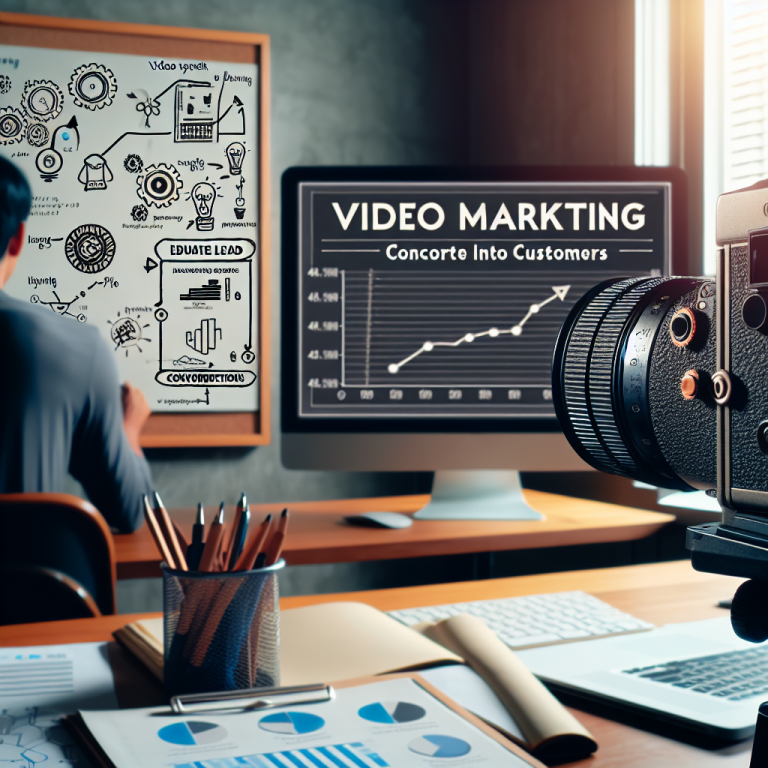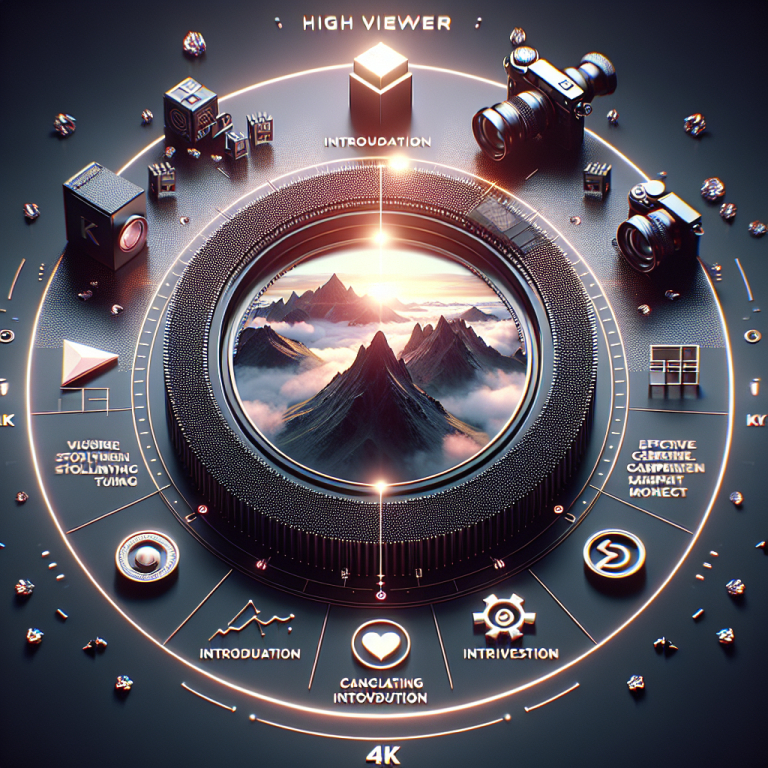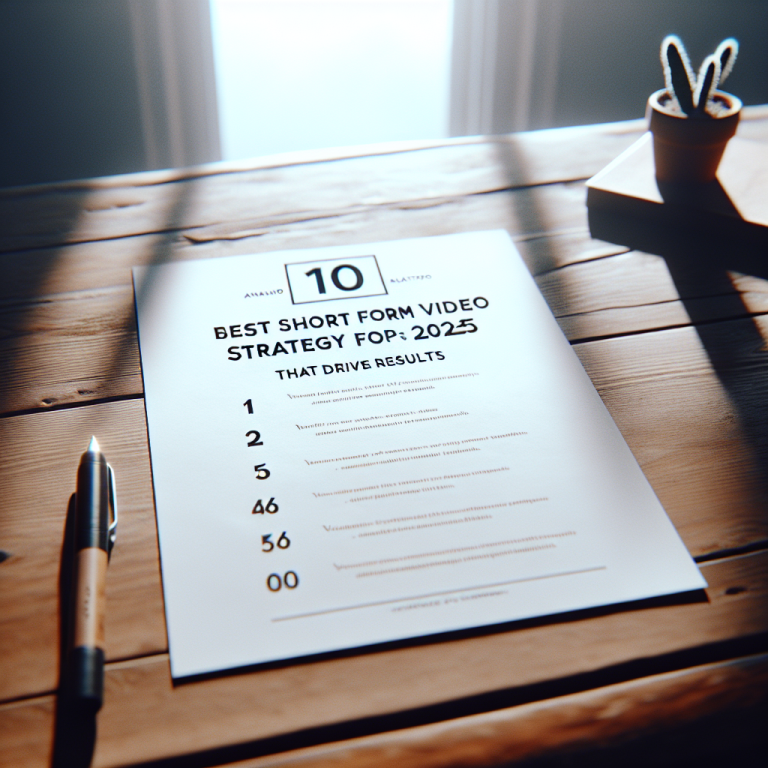How to Use Video Advertising to Make Your Business Unstoppable
Hey there, fellow entrepreneurs! Today, I’m super excited to dive into something that has truly transformed my business: video advertising. In this digital age, let me tell you, if you’re not leveraging the power of video, you’re missing out big time! I’ve seen firsthand how the right video strategy can catapult your business into the stratosphere. So, let’s break it down into five major areas that can help make your business unstoppable.
1. Understanding Your Audience
Identify Your Target Demographic
When it comes to video advertising, knowing your audience is absolutely crucial. Take time to really figure out who you’re talking to. Are they millennials, Gen Z, or maybe even baby boomers? Each group has its own preferences, and your videos need to resonate with them. This step is like setting the foundation of a house; if you don’t do it right, everything else will crumble.
Once you’ve pinpointed your audience, dive deeper into their interests and pain points. Spend time on social media, read comments on relevant posts, and maybe even engage in conversations. Knowing what makes them tick will help you create content that sparks their interest and, most importantly, drives action.
Don’t just assume you know what they want. Data will be your best buddy here. Utilize analytics from your social media and website to see what’s resonating with them. After all, it’s not just about throwing content out there; it’s about crafting a message that truly connects.
Establishing Their Pain Points
Now that you’ve got a grasp on who your audience is, it’s time to identify their pain points. What are they struggling with that your business can solve? Videos are a fantastic way to showcase solutions. By addressing their concerns, you’re showing them that you understand their challenges and are ready to help.
Consider this: if someone is battling with time management, a video that offers solutions while showcasing your product will grab their attention. It’s about empathy and providing real value, and guess what? When they feel understood, they’re more likely to trust you and your brand.
Ultimately, addressing these pain points isn’t just a gimmick. It’s a way of forming a genuine connection. People love to see that their needs are prioritizing in your marketing strategy, making them more inclined to engage with your content.
Creating Personas for Engagement
Another effective approach is creating customer personas. Think of them as fictional characters that represent your ideal customers. Get detailed with this—give them names and backgrounds! It might sound silly, but visualizing your audience in this way can help you craft content that truly speaks to them.
Once you have these personas, tailor your videos around them. Each persona might react differently to various styles of content—informative, entertaining, or even emotional storytelling. Getting this right can massively boost your engagement rates, leaving your audience feeling as if you’re specifically speaking to them.
2. Crafting Compelling Content
Defining Your Message
Alright, so you know your audience now. The next step? Crafting a killer message! What do you want to tell them? This is where clarity and creativity blend together. Your message should be clear, concise, and aligned with your audience’s desires and needs.
When you create your videos, remember that attention spans are short. You need to pack a punch in the first few seconds to hook viewers. Think about using bold visuals or striking questions at the start to intrigue them and keep them watching. Remember, you want them to stick around till the end!
Moreover, your message can be a mix of education and entertainment. Infusing a bit of fun or humor can make your videos more enjoyable and shareable. The goal is to create content that resonates, gets people talking, and encourages them to share with their friends.
Using Storytelling Techniques
Now let’s talk about storytelling. People love stories! It’s an age-old technique that captures an audience’s attention and leads them through a journey. Use characters, conflicts, and resolutions to create a narrative that people can relate to.
Sharing your personal experiences or client success stories can be a powerful way to connect emotionally. A heartfelt story can shift the perception of your brand from just a company to a relatable entity, and that’s where loyalty starts to build.
Make sure the story aligns with your brand’s message and resonates with your audience’s pain points. If you can show how your product or service played a role in solving an issue, that’s even better. You’re not just selling anymore; you’re inspiring and offering hope.
Ensuring High Production Quality
Now, let’s chat about production quality. I get it; not everyone can have a full-fledged film crew at their disposal, but don’t let that discourage you. With smartphones these days, you can shoot amazing quality videos. Invest in a decent mic and some good lighting, and you can create visually appealing content without breaking the bank.
Remember, while content is king, production quality matters too. Grainy visuals or poor sound can turn viewers away faster than you can say “cut!” Make sure you put time into editing and polishing your videos, so they reflect the professionalism of your brand.
That said, don’t stress too much about being perfect. Authenticity can outweigh overly polished content sometimes. Just be yourself, and if it feels genuine, your audience will love it!
3. Choosing the Right Platforms
Social Media Selection
With so many platforms out there—YouTube, Instagram, TikTok, Facebook—choosing where to post your videos can feel overwhelming. Here’s the deal: think about where your audience hangs out. Are they scrolling through TikTok for quick entertainment, or are they on YouTube searching for more in-depth content?
Each platform has its unique features and audience preferences. For example, Instagram likes visually appealing content that’s digestible, while YouTube allows for longer, more in-depth videos. Tailoring your content to fit the platform can make a massive difference.
Also, look at trends—what type of videos are thriving on each platform? Jumping on trends can give your content a boost, but don’t lose your brand’s authenticity in the process. Always find a balance between trendiness and staying true to your message.
Understanding Platform Algorithms
Alright, this one’s super important: each platform has its algorithm, and understanding it can make or break your reach. A good grasp of how each platform’s algorithm works can optimize your content for better visibility. For instance, engagement metrics play a huge role in how widely your videos are distributed. More likes, shares, comments—these matter!
Stay updated on algorithm changes, as they can significantly impact your video performance. Remember that quality content drives engagement, which fuels algorithm favorability. So, never sacrifice quality for the sake of quantity!
Uploading consistently is also crucial. Find a schedule that works for you, whether it’s weekly, bi-weekly, or whatever. Consistency helps keep your audience engaged and eager for your next video. They’ll start to expect content from you, solidifying your place in their digital life.
Measuring Platform Success
After posting, you’ll want to evaluate how successful your content is performing. Use analytics tools to measure views, engagement, watch time, and audience feedback. What’s working? What’s flopping? Adapt your strategy based on this data.
Also, don’t shy away from asking your audience for feedback. Send out polls or ask questions in your videos. This interaction will make your viewers feel valued, and you’ll get insights on what they want to see more of.
Constantly measuring and adapting will keep your strategy fresh and relevant. Video advertising isn’t a “set it and forget it” deal; it’s a dynamic, ongoing process that evolves as your audience does.
4. Leveraging SEO Techniques
Optimizing Video Titles and Descriptions
Alright, so we all know about SEO, right? Well, it’s just as crucial for video content. Start with optimizing your titles. Use keywords that your audience is likely to search for. It’s like giving your video a fighting chance to show up in those search results.
Ensure your descriptions are rich with relevant keywords too. This is your opportunity to provide context for your video content, and it helps platforms understand what your video is about. But don’t just stuff your description with keywords; make it readable and engaging!
Include a call to action in your description, guiding viewers on what to do next—be it subscribing to your channel, visiting your website, or checking out products. A well-crafted description can drive traffic like nobody’s business!
Using Hashtags Strategically
Tags and hashtags can be your secret weapon! They help categorize your content and make it easier for the right audience to find you. Use specific tags relevant to your video, and don’t overdo it—usually, a handful is just right.
Research trending hashtags related to your niche and blend them into your strategy. Being part of broader conversations helps you tap into wider audiences. Just remember, hashtags are like spices—too much can ruin the dish!
Experiment with different combinations and see what gains traction. You might find surprising success from simply changing up your tags, leading to increased visibility and engagement. It’s all about trial and error, and that’s okay!
Encouraging Audience Interaction
Encouraging comments, likes, and shares can significantly boost your video’s visibility. Ask questions in your videos or prompt viewers to comment on what they think. Creating a community around your content can elevate your brand and make your audience feel engaged and invested.
Reply to comments and foster a discussion; it shows that you care about your audience and their opinions. Building a loyal community around your videos can lead to repeat views and shares. It’s like having a cheerleading squad for your brand!
Finally, consider running contests or giveaways encouraging viewers to engage with your content. Not only does this draw in more viewers, but it creates a buzz around your business. Everyone loves a good opportunity, right?
5. Measuring Effectiveness and ROI
Setting Clear KPIs
The last step I want to talk about is measuring your success. Setting clear Key Performance Indicators (KPIs) helps you understand how your video advertising efforts are truly performing. Choose metrics that make sense for your business goals, such as view count, click-through rates, or conversions.
By having clear KPIs, you can see what’s working and what isn’t, giving you a framework to adjust your strategy moving forward. Think about what success looks like for your business and tailor your KPIs accordingly. It makes evaluation easy and keeps you focused!
Remember that achieving goals can take time, so patience is key! Sometimes, you’ll have to tweak your approach a few times, but that’s all part of the journey. Don’t get discouraged if progress isn’t immediate.
Analyzing Video Performance
Take advantage of analytics tools at your disposal, such as YouTube Insights, Google Analytics, or social media insights. These platforms provide a treasure trove of data about how your videos are performing.
Look at viewer retention rates to see where people are dropping off your videos. If they’re bailing halfway through, it might be time to reassess content length or engagement strategies. Understanding these statistics will provide valuable insights and help you sharpen your content strategy.
Analyze which videos resonate the most with your audience and why. Knowing what to replicate or what not to do is essential for creating impactful content that contributes to your business goals.
Adapting Strategies Based on Data Insights
Last but definitely not least: adapt your strategy based on what the data is telling you. This is a crucial part of the process that many overlook. If something isn’t working, don’t be afraid to pivot. Marketing is all about testing, learning, and evolving.
Regularly review your KPIs and adjust your approach as necessary. If a certain type of video consistently performs well, think about creating more of that content. Conversely, if something isn’t connecting with your audience, it may be time to try a different angle.
Staying flexible and open-minded will keep your video advertising efforts alive and thriving. The digital landscape is constantly changing, and being adaptable is key to keeping your business unstoppable!
FAQs
1. How important is video advertising for my business?
Video advertising is crucial as it grabs attention, conveys messages quickly, and is highly engaging. It can significantly boost visibility and conversions.
2. What platforms should I focus on for video advertising?
Your choice of platforms should depend on where your target audience spends their time. YouTube, Instagram, TikTok, and Facebook are all great options, but prioritize based on audience demographics.
3. How can I measure the success of my video ads?
Measure success using KPIs like views, engagement rates, and conversion rates. Employ analytics tools to track performance and adapt your strategy accordingly.
4. Do I need expensive equipment for video production?
No, you don’t! While high-quality production can make a difference, many smartphones can shoot great videos. Good lighting and clear audio can enhance your production quality significantly.
5. How often should I post video content?
Consistency is key! Create a posting schedule that works for you, whether it’s weekly or bi-weekly, and stick to it to keep your audience engaged.








